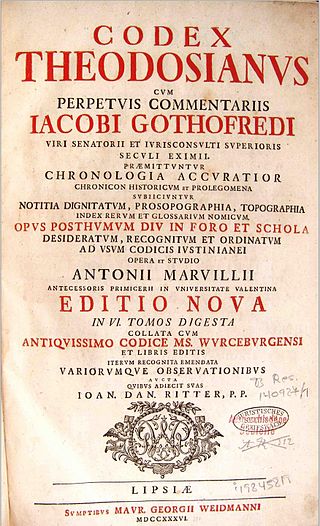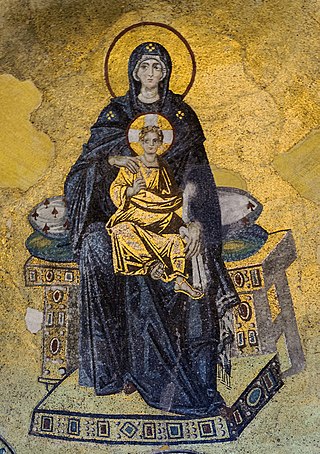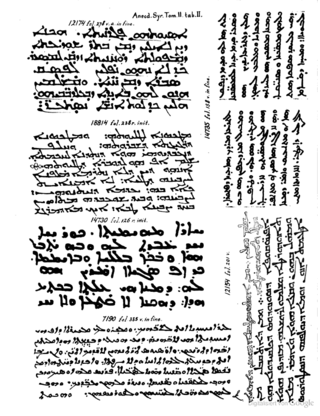Related Research Articles

Archon is a Greek word that means "ruler", frequently used as the title of a specific public office. It is the masculine present participle of the verb stem αρχ-, meaning "to be first, to rule", derived from the same root as words such as monarch and hierarchy.

Leo VI, also known as Leothe Wise, was Byzantine Emperor from 886 to 912. The second ruler of the Macedonian dynasty, he was very well read, leading to his epithet. During his reign, the renaissance of letters, begun by his predecessor Basil I, continued; but the empire also saw several military defeats in the Balkans against Bulgaria and against the Arabs in Sicily and the Aegean. His reign also witnessed the formal discontinuation of several ancient Roman institutions, such as the separate office of Roman consul.
New Rome was the original name given by the Roman emperor Constantine the Great to his new imperial capital in 330 CE, which was built as an expansion of the city of Byzantium on the European coast of the Bosporus strait.

The Codex Theodosianus is a compilation of the laws of the Roman Empire under the Christian emperors since 312. A commission was established by Emperor Theodosius II and his co-emperor Valentinian III on 26 March 429 and the compilation was published by a constitution of 15 February 438. It went into force in the eastern and western parts of the empire on 1 January 439. The original text of the codex is also found in the Breviary of Alaric, promulgated on 2 February 506.

The Apostolic Canons, also called Apostolic canons, Ecclesiastical Canons of the Same Holy Apostles, or Canons of the Holy Apostles, is a 4th-century Syrian Christian text. It is an Ancient Church Order, a collection of ancient ecclesiastical canons concerning the government and discipline of the Early Christian Church, allegedly written by the Apostles. This text is an appendix to the eighth book of the Apostolic Constitutions. Like the other Ancient Church Orders, the Apostolic Canons uses a pseudepigraphic form.

A consul was the highest elected public official of the Roman Republic. Romans considered the consulship the second-highest level of the cursus honorum—an ascending sequence of public offices to which politicians aspired—after that of the censor, which was reserved for former consuls. Each year, the Centuriate Assembly elected two consuls to serve jointly for a one-year term. The consuls alternated each month holding fasces when both were in Rome. A consul's imperium extended over Rome and all its provinces.
The word taxiarch is used in the Greek language to mean "brigadier". The term derives from táxis 'order', in military context meaning 'an ordered formation'. In turn, the rank has given rise to the Greek term for brigade, taxiarchia. In Greek Orthodox Church usage, the term is also applied to the archangels Michael and Gabriel, as leaders of the heavenly host, and several locations in Greece are named after them.

Actuarius or actarius, rendered in Greek as aktouarios (ἀκτουάριος), was the title applied to officials of varying functions in the late Roman and Byzantine empires.

Macedonian Renaissance is a historiographical term used for the blossoming of Byzantine culture in the 9th–11th centuries, under the eponymous Macedonian dynasty (867–1056), following the upheavals and transformations of the 7th–8th centuries, also known as the "Byzantine Dark Ages". The period is also known as the era of Byzantine encyclopedism, because of the attempts to systematically organize and codify knowledge, exemplified by the works of the scholar-emperor Constantine VII Porphyrogennetos.

The spatharii or spatharioi were a class of Late Roman imperial bodyguards in the court in Constantinople in the 5th–6th centuries, later becoming a purely honorary dignity in the Byzantine Empire.

Autokrator or Autocrator is a Greek epithet applied to an individual who is unrestrained by superiors. It has been applied to military commanders-in-chief as well as Roman and Byzantine emperors as the translation of the Latin title imperator. Its connection with Byzantine-style absolutism gave rise to the modern terms autocrat and autocracy. In Modern Greek, it means "emperor", and its feminine form is autokráteira (αὐτοκράτειρα).
In the late Byzantine Empire, the term kephale was used to denote local and provincial governors.

Stratēlatēs was a Greek term designating a general, which also became an honorary dignity in the Byzantine Empire. In the former sense, it was often applied to military saints, such as Theodore Stratelates.
The paradynasteuōn was a term used, especially in the Byzantine Empire, to designate a ruler's favorite, often raised to the position of chief minister. Probably deriving from Thucydides, it was used in the later Roman Empire for people with great authority. It was not an official title or position, but the term was extensively used by chroniclers such as Theophanes the Confessor or Theophanes Continuatus to designate an emperor's closest aide and chief minister. It gained greater currency during the Komnenian period and continued to be used by historians of the Palaiologan period, although the more technical term of mesazōn ("mediator"), which eventually came to correspond to an actual office, had largely replaced it.
Decanus means "chief of ten" in Late Latin. The term originated in the Roman army and became used thereafter for subaltern officials in the Byzantine Empire, as well as for various positions in the Church, whence derives the English title "dean". It is unrelated to the position of deacon.
Cubicularius, Hellenized as koubikoularios, was a title used for the eunuch chamberlains of the imperial palace in the later Roman Empire and in the Byzantine Empire. The feminine version, used for the ladies-in-waiting of the empresses, was koubikoularia (κουβικουλαρία).

The quaestor sacri palatii was the senior legal authority in the late Roman Empire and early Byzantium, responsible for drafting laws. In the later Byzantine Empire, the office of the quaestor was altered and it became a senior judicial official for the imperial capital, Constantinople. The post survived until the 14th century, albeit only as an honorary title.
Toparchēs, anglicized as toparch, is a Greek term for a governor or ruler of a district and was later applied to the territory where the toparch exercised his authority. In Byzantine times, the term came to be applied to independent or semi-independent rulers in the periphery of the Byzantine world.

The tzangion, plural tzangia (τζαγγία) was a type of boot or sandal, which in the Middle Ages became an important part of the Byzantine Emperors' regalia.

The Syro-Roman law book is a compilation of secular legal texts from the eastern Roman Empire originally composed in Greek in the late 5th century, but surviving only in Syriac translation. As a work of Roman law, the original language of many of its legal texts would have been Latin.
References
- 1 2 Kazhdan, Alexander (1991). "Novel". In Kazhdan, Alexander (ed.). The Oxford Dictionary of Byzantium . Oxford and New York: Oxford University Press. ISBN 0-19-504652-8.